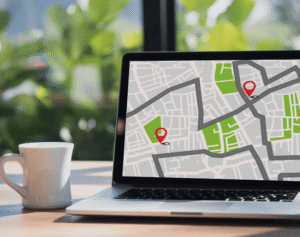The travel booking game has changed completely. Travelers don’t start with Expedia or Booking.com anymore—they begin their journey on Google. Whether they’re searching “things to do in Bangkok” or looking at Maps for nearby activities, Google has become the first stop for trip planning. This shift creates a massive opportunity for tour operators who know how to play the game right.
Travel & Tours Digital Marketing has helped operators capture direct bookings worth thousands of dollars by mastering Google’s ecosystem. This guide shows you exactly how to position your tours where travelers are actually looking.
Why Google Maps and Things to Do Matter for Tour Operators
Over 90% of travelers research trips online, starting with Google searches. When someone types “snorkeling tours Miami,” Google Things to Do appears right at the top—above Viator, GetYourGuide, and every other OTA.
Google Maps has become the new Yellow Pages for local discovery. Travelers walking around destinations pull out their phones, open Maps, and search “tours near me.” If you’re not showing up, you’re invisible to potential customers.
The beautiful part about Google’s platforms? They send people directly to your business. Unlike OTAs that charge hefty commissions and own customer relationships, Google connects travelers straight to your booking system. That means higher margins and better customer lifetime value.
Setting Up the Essentials
Your Google Business Profile is your digital storefront on Maps and Search. Start by claiming and verifying your listing. Choose categories carefully—”Tour operator,” “Tourist attraction,” and “Travel agency” each trigger different features and search visibility.
Add your tours as “products” or “services” with detailed descriptions, current pricing, and direct booking links. Most operators treat their Business Profile like a basic directory listing when they should think of it as a mini-website.
Setting up your Google Things to Do feed requires connecting inventory to Google Merchant Center through XML feeds and API integrations. Once running, your tours appear in Google’s activity carousel with photos, availability, and booking links—often above paid ads.
Your website design plays a crucial role here. Google needs clean, crawlable tour pages to populate feeds properly. Each tour needs its own dedicated page with structured data markup.
On-Page SEO for Tour and Activity Pages
Every tour page needs a proven template that both Google and travelers love:
- Compelling titles that include destination and activity: “Sunset Sailing Tour in Santorini—3 Hours with Wine Tasting”
- Story-driven descriptions that paint experience pictures while including keywords naturally
- Detailed itineraries with meeting points, inclusions, and unique selling points
- Comprehensive FAQs covering cancellation, weather, age restrictions, and what to bring
- Schema markup using Tour, Event, and Offer schemas for rich snippets
Internal linking connects tour pages to destination guides and city pages. If you run walking tours in Prague, link from your main Prague page to each specific tour. This creates topical authority and helps Google understand content relationships.
Local SEO Tactics That Boost Maps Visibility
Google Maps rankings depend on relevance, distance, and prominence. You can’t change location, but you control how Google perceives business relevance.
Service attributes matter more than most operators realize. Enable “Online appointments,” “Onsite services,” and relevant attributes that help you appear for specific search modifiers.
Photo uploads should happen weekly. Google rewards fresh visual content with better visibility. Upload recent tour photos, happy customers, and seasonal highlights. Videos perform even better.
The Q&A section gets overlooked constantly. Seed it with common questions about tours, the booking process, and meeting locations. When customers ask new questions, respond quickly. This creates fresh content Google associates with active businesses.
Review management goes beyond responding to feedback. You need consistent review velocity through social media marketing campaigns that encourage post-tour reviews.
Measuring Success and Tracking Bookings
Google Analytics 4 setup is non-negotiable. Configure enhanced conversions to see which Google surfaces drive actual bookings, not vanity metrics.
UTM parameters help separate traffic sources:
- Different parameters for Google Maps clicks
- Things to Do appearances
- Organic search results
This granular tracking reveals which optimization efforts actually work.
Watch these key metrics:impressions in Google My Business Insights show visibility, clicks measure interest, and conversion rate reveals booking efficiency. Track phone calls separately—many tour bookings happen through direct calls triggered by Maps listings.
Common Mistakes to Avoid
Price accuracy in Google feeds causes more headaches than any other issue. Outdated pricing creates customer frustration and Google penalties. Keep feeds synchronized with actual availability and rates.
Duplicate content across tour pages confuses Google’s algorithms. Each tour needs unique descriptions, even if visiting similar locations. Focus on different aspects, customer types, or seasonal variations.
Review response neglect signals poor customer service. Respond to every review—positive ones show appreciation, and negative ones demonstrate professionalism.
Over-reliance on OTAs without building direct booking capacity leaves money on the table. Use OTAs for visibility but invest in your own SEO services and booking infrastructure.
Quick 30-Day Action Plan
- Week 1: Audit Google Business Profile completely. Update categories, add missing information, and upload fresh photos. Verify all details match your website.
- Week 2: Optimize top 5 tour pages with schema markup, detailed FAQs, and compelling descriptions. Focus on pages already receiving organic traffic.
- Week 3: Launch review generation campaign through email follow-ups and social media. Add 10 new photos to Business Profile and answer pending Q&A questions.
- Week 4: Set up Google Things to Do feeds. Implement proper GA4 tracking and establish baseline metrics for future improvement.
Next Steps
Google’s travel ecosystem represents the biggest shift in tourism marketing since the internet began. Tour operators who master Maps and Things to Do positioning will capture valuable direct bookings while competitors pay growing OTA commissions.
Success requires ongoing optimization, technical expertise, and strategic thinking. The reward? Direct relationships with travelers, better profit margins, and sustainable business growth.
Ready to dominate Google’s travel searches? Book a free consultation with Travel & Tours Digital Marketing. We’ll analyze your current visibility and create a custom strategy that turns Google searches into direct bookings.




















